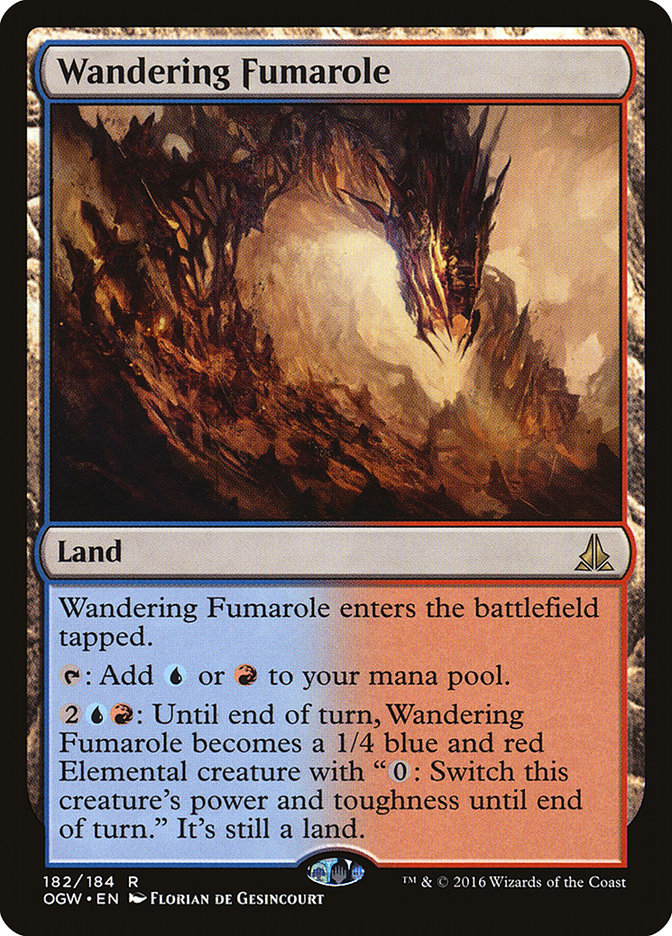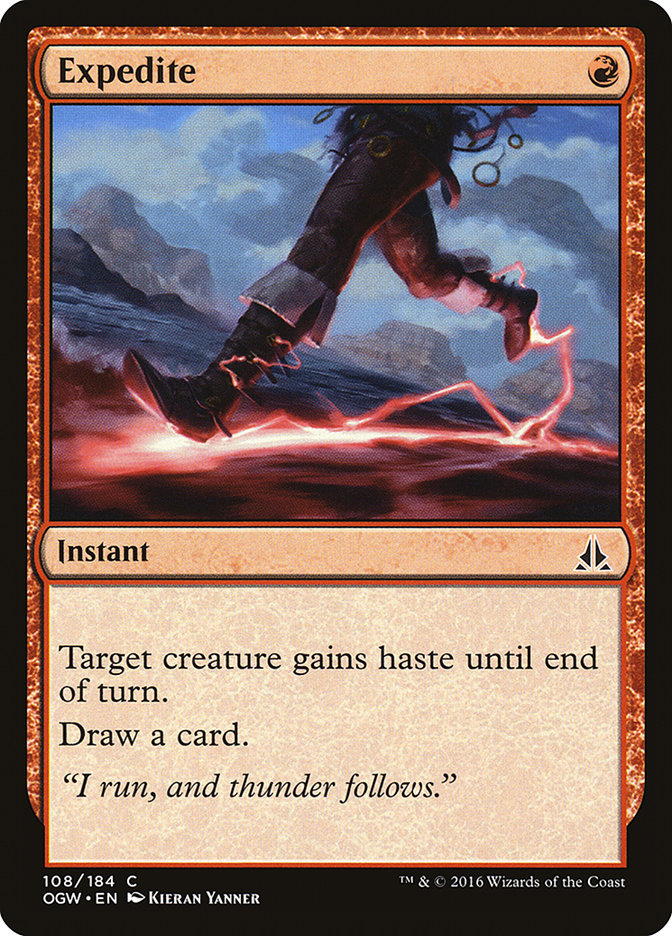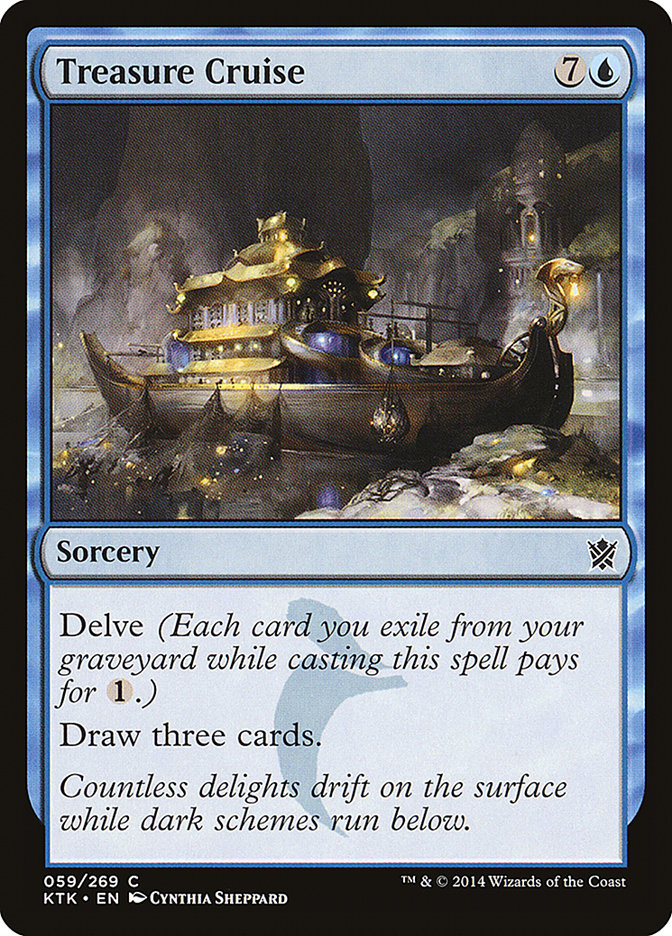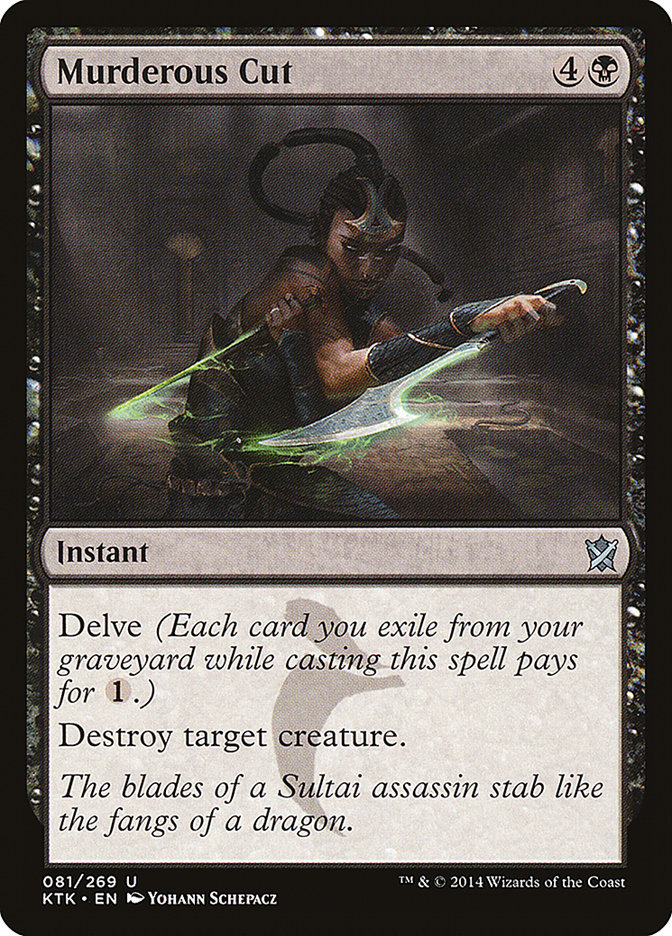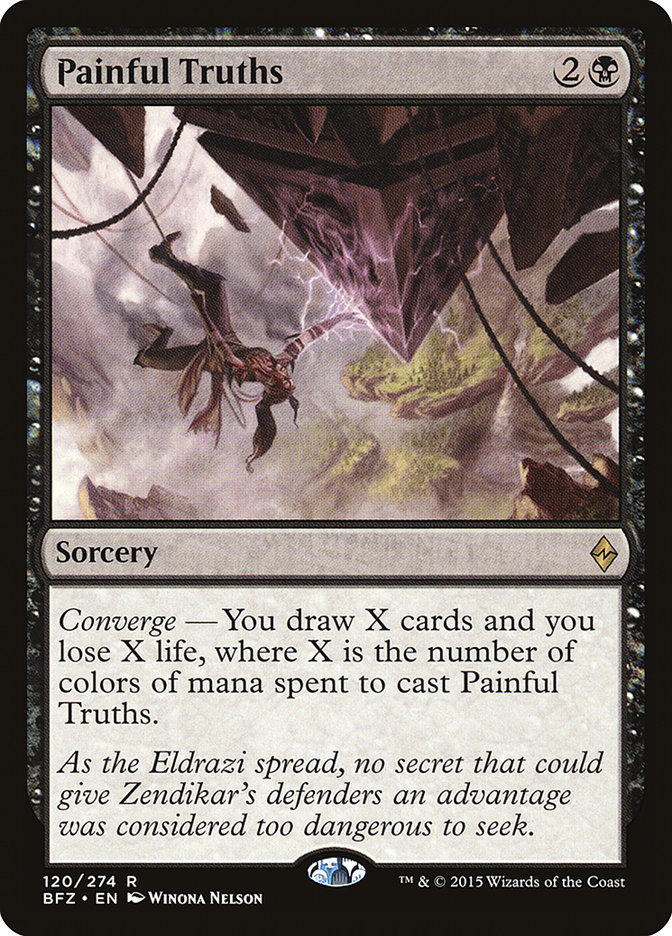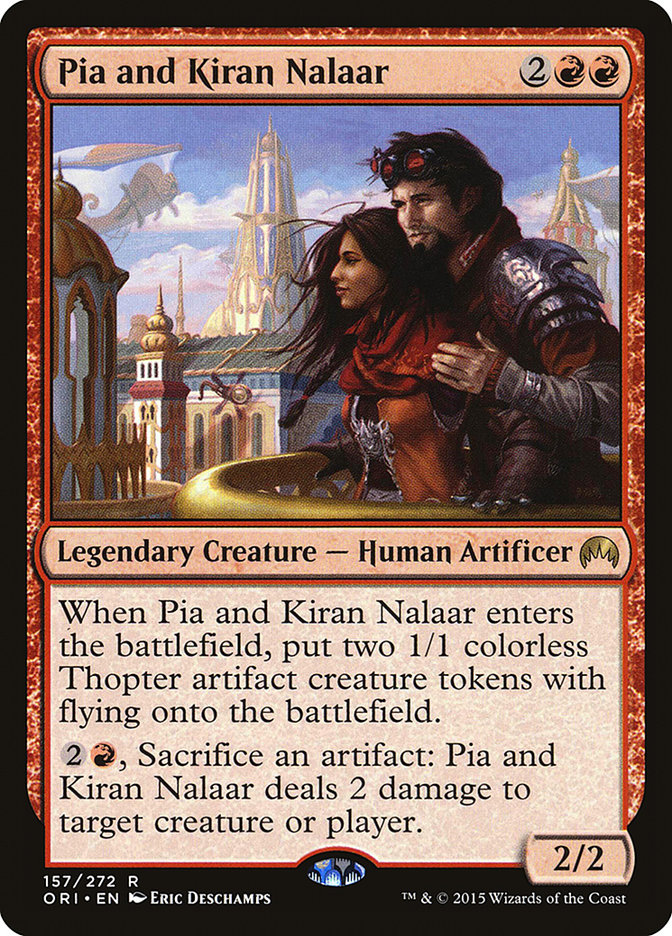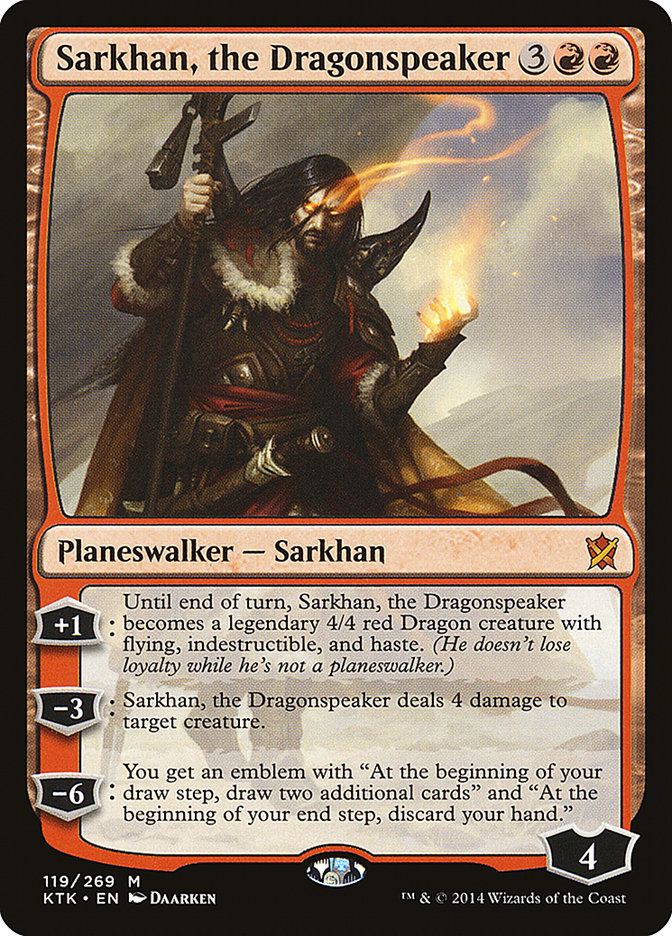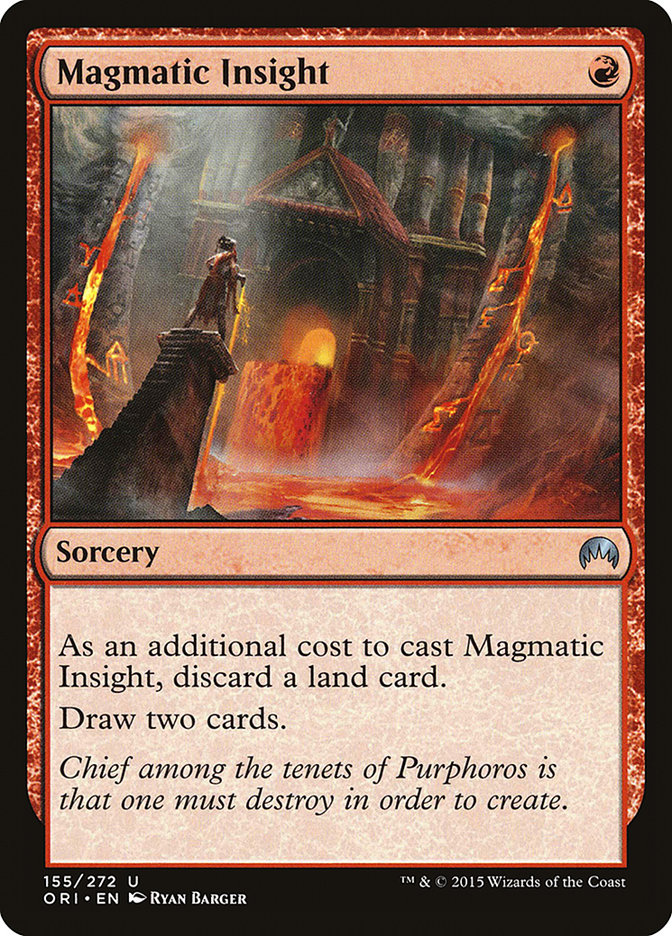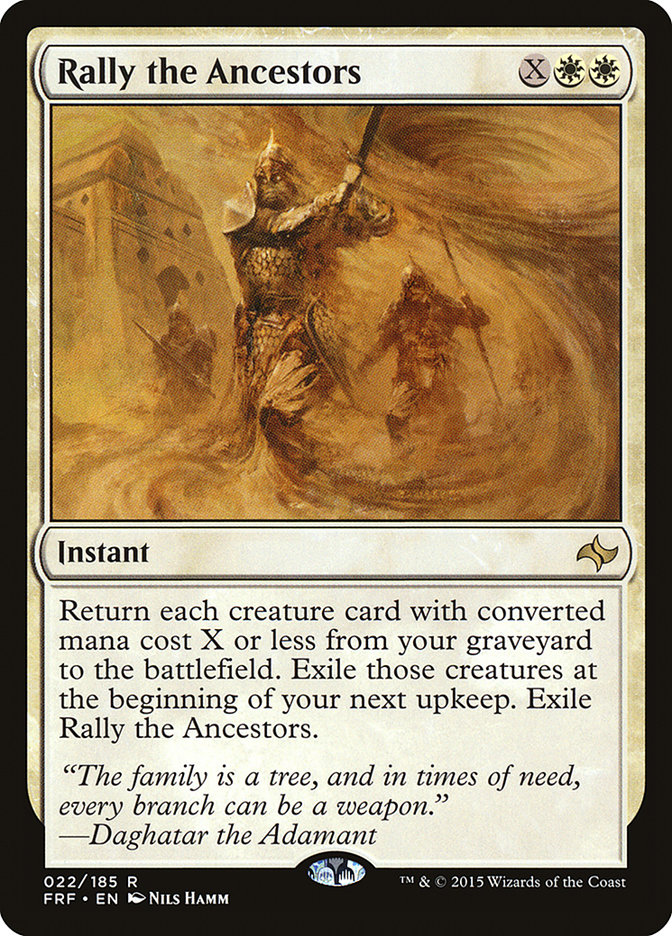Going into #SCGATL I was somewhat discouraged with U/R Prowess. The deck had only performed okay in testing and I was beginning to think that perhaps it was not quite powerful or consistent enough to compete with the top decks in Standard. Still, I was determined to play the deck in a tournament setting and let the chips fall where they may.
Leaving #SCGATL I was pleasantly surprised with the power of the deck. I only made some slight changes to the list I published lastweek, eschewing the black splash to improve the mana base and adding a single Magmatic Insight over the second Expedite to help mitigate flood. Perhaps my changes to the deck were ill-founded as Dalton Ozmun made the Top 8 with my exact list from last week!
Creatures (16)
Lands (21)
Spells (23)
- 1 Dispel
- 4 Titan's Strength
- 4 Treasure Cruise
- 2 Temur Battle Rage
- 2 Roast
- 4 Fiery Impulse
- 2 Expedite
- 4 Slip Through Space
Sideboard

I had a chance to talk with Dalton about his experience in the tournament shortly before he took an intentional draw in round 15 to lock up his spot in the elimination rounds. As a result of that conversation and my own experience playing the deck to a respectable but disappointing 10-5 record, I feel I have a better grasp on it than ever before, and I want to share what I have learned before I enter Modern-only mode in testing for #PTOGW.
I will preface this with my records at the tournament against the other top decks in the format:
Four-Color Rally: 1-1
Eldrazi Ramp: 2-1
Abzan Aggro: 2-0
Mardu Green: 2-0
Jeskai Black: 0-0
Atarka Red: 0-0
The primary point of agreement between me and Dalton was that Jace, Vryn’s Prodigy is incredible. I know that sounds trite at this point, but I have taken a surprising amount of criticism for including Jace, even after discussing last week why what many consider a “control card” fits into a seemingly aggressive deck. I will not repeat myself here, except to say that both Dalton’s and my experience confirmed Jace’s necessary place in the deck. It does way too many important things, from sculpting your draws, providing card advantage, and stalling opposing aggression. I even won a game against Abzan with an emblem! U/R Prowess would not be competitive without it.
Dalton and I also noted that despite the relatively low land count, U/R Prowess has a high propensity to flood. Jace helps mitigate this to some degree, but between the many cantrips and Treasure Cruise you end up seeing many more cards than an average Standard deck, so a deck that is 35% lands plays more like 40% or higher.
Given that the cards in U/R Prowess on a one-for-one basis are generally less powerful than our opponents’, we rely on having a higher number of them and creating overwhelming power from the internal synergies playing two or more spells in a turn creates. As such, we want to build the deck so it operates on as few lands as possible and right now that is likely not the case.
Despite drawing five or more lands in many games, both Dalton and I noted that Wandering Fumarole was rarely activated. You do not trade a lot of resources when playing this deck, and as such, your opponent is usually prepared to deal with the creature land until the very late game, which you are rarely interested in playing toward.
Committing five mana for a creature that your opponent can likely answer for less is a losing proposition, so I am currently questioning Fumarole’s place in the deck beyond being a painless dual land. Even as a dual land, entering the battlefield tapped is a significant drawback after the first turn, often limiting your ability to “combo” off with multiple spells. If I cut down to twenty lands it will likely be the second Fumarole that leaves.
Counterintuitively, the other option to help against flooding is to actually increase the land count. This would allow the deck to support several more copies of Magmatic Insight, a great card to help mitigate flood, find your threats, and fuel delve for Treasure Cruise. The single copy I played was excellent nearly every time I cast it (the one time it wasn’t was unfortunately caught on camera, so do not let that color your opinion of the card) and even with 21 lands I wished that the Expedite I played had been a second Insight.
Dalton had more positive things to say about Expedite, but I found myself boarding it out a lot and rarely casting it for more effect than “R: Draw a card.” I am aware of the potential the card brings by allowing you to flip your Jace in response to a removal spell, but in practice those situations do not come up often enough to counteract the low floor the card has.
The other benefit of a higher land count is that it facilitates a black splash that is too difficult on fewer lands. I ended up cutting the fourth Polluted Delta when on 21 lands because it too often had no target or found a useless Island when I wanted more red mana.
With only seven fetchlands and two Battle lands, playing more than one black card is too greedy, but with 22 lands you can play the full eight fetchlands along with a second copy of Smoldering Marsh for a total of eleven black sources. That is enough for me to feel comfortable playing a few black cards and there are some great options.
Dalton actually did play with a small black splash on ten sources and the card he was most impressed with was Duress. Counterspells are awkward in this style of deck since they require you to commit mana that you would like to use developing your board, not to mention casting spells to trigger prowess that instead go solely toward trading for an opposing spell. Duress lets you disrupt your opponent in the same way a counterspell would but does so on your terms, as you cast it proactively and turn the resulting prowess triggers into damage.
This can buy you precious time against Ramp, strip a key Collected Company or Rally, or pave the way for your creatures to come down unopposed by taking a removal spell, all without having to hope your opponent plays their spell at a time that is convenient for you. In the most basic terms, Duress is a proactive disruption spell for a proactive deck, and this theorycrafting paid off handsomely for Dalton while I was often stuck with Dispels and Disdainful Strokes in my hand at the wrong time.
The other potential additions are Murderous Cut and Painful Truths. Cut would be ideal for the deck, as having cheap removal for large creatures that can trump our small ones is great, but with a full set of Treasure Cruises in the deck already, it is hard to play more delve spells. I like a single copy in the sideboard, since I tend to sideboard out a Cruise against decks like Abzan Aggro where the Cut would be most useful.
Painful Truths is a card I was excited about initially but have since cooled on. I thought that with enough draw power the deck could play into the long game against Jeskai Black, but now I believe you have to approach the matchup more aggressively. Eventually the power level of their individual cards compared to yours will take over the game, especially Soulfire Grand Master, so you have to really bury them in card advantage to win a game of attrition, a plan that is simply not viable. Having Duresses for their card advantage spells could change this, but I am highly skeptical.
As for the rest of the sideboard, I grew worried about Pia and Kiran Nalaar as I expected more people to have various small sweepers in their sideboards, be it Radiant Flames, Kozilek’s Return, or Flaying Tendrils. Pia and Kiran Nalaar are great if you are playing against a slower deck that lacks these cards, and may still be good enough if you have Duresses to protect them. It is also surprisingly effective against Rally, since generating pressure in the air is much easier than on the ground against them, and the couple can pick off an important Grim Haruspex or Jace, Vryn’s Prodigy.
I ended up replacing one copy of Pia and Kiran Nalaar with a Sarkhan, the Dragonspeaker, reasoning that I could find a spot to play it against the various Mardu decks where it would not be Crackling Doomed, at which point I could untap and defend it with a Dispel. The added versatility of killing a key Jace or Soulfire Grand Master is also relevant, as that is what I did the only time I cast it in the tournament, to good effect. The best option for a big threat in my opinion is Chandra, Flamecaller, but on 21 lands I don’t think you can reliably cast it.
Given what I have learned, here are the two lists I would be testing with this week:
Creatures (16)
Lands (20)
Spells (24)

Creatures (16)
Lands (22)
Spells (22)

The first list is very close to what I played last weekend, simply cutting a land from the main in order to mitigate flood and replacing it with a single Wild Slash, which is a luxury I have often tried to fit into the main. Having a cheap answer to Soulfire Grand Master or Jace, Vryn’s Prodigy is important, and the deck does not have a good matchup against Atarka Red, so having another early answer in that matchup is welcome.
If the mirror becomes more popular, having another early removal spell is also great there, although I may be biased from losing two mirror matches last weekend (as well as a match to Naya Prowess). Last, Wild Slash is an instant you can cast reactively to protect your own creatures, regardless of what the board looks like.
I would like to cut the Expedite for another Magmatic Insight, but on twenty lands, Insight can be a liability, so the dream of flipping Jace in response to a removal spell will live for now.
The second list is much more exciting and more derivative of what Dalton played. Going up to three copies of Magmatic Insight raises the velocity of the deck to another level, so I felt comfortable going down to a single Temur Battle Rage in the main, since the second is a luxury and the card is awkward to draw in multiples.
The real gain for this list is in the sideboard. Duress is incredible in this deck and Murderous Cut is a clear upgrade to the fourth Roast. Every time you can replace a two-mana spell with a one-mana spell in this deck, you make every other card fractionally better, so the incentive to do so is subtly larger than it appears. You have double and triple prowess turns more often and the entire engine runs more smoothly.
The straight U/R list is certainly less consistent because it stumbles more often and has less velocity, so as long as Magmatic Insight provides as much flood insurance as I expect it to, the black-splash version will emerge the better of the two lists.
In my estimation, this deck has a positive matchup against Abzan Aggro and Mardu Green, since those decks are clunky enough that we can get under their removal, and a weak matchup against Jeskai Black and Atarka Red, since they have cheap spells to keep pace with us in the early game and later overpower us either with powerful spells or token generation.
Ramp and Rally are close matchups, with the former being a race where you want to focus on disrupting them just long enough to set up a combo kill and the latter being a very tricky matchup that can play out in a number of ways, including attrition, racing, and (oddly) you being in a combo role to their control role. I would advise sideboarding with these ideas in mind rather than adhering to a strict in/out guide, since this U/R Prowess is flexible enough to react to the various nuances in a given decklist.
Starting this week I have begun focusing solely on preparing for #PTOGW, so I will not be working on U/R Prowess for a while. I hope those of you who are interested in the deck have found my exploration of the archetype fruitful for developing your own lists and I am excited to see how the deck evolves with the metagame. When I return to Standard it will be the first deck I look at.



